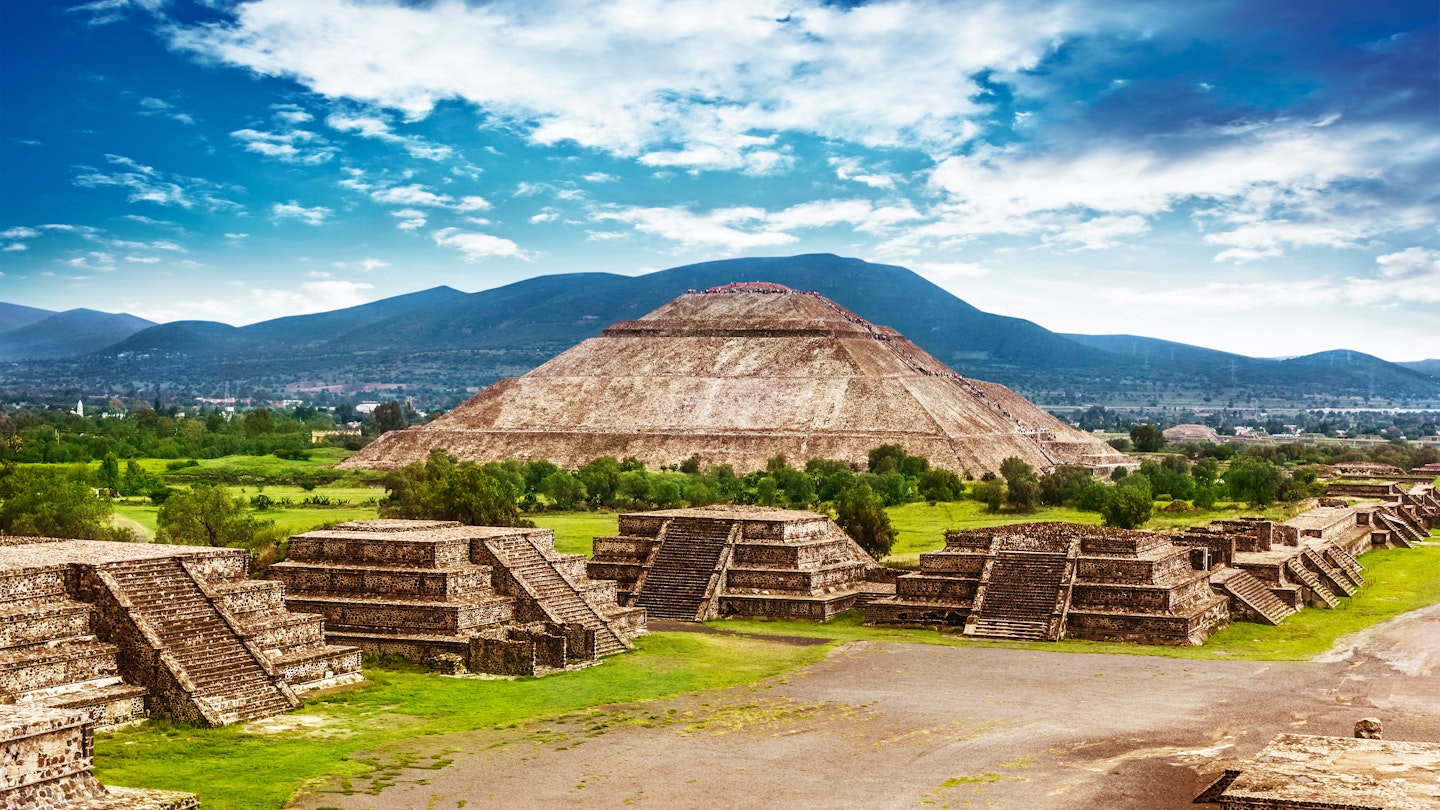Exploring the Ancient Civilizations of Mexico
Mexico’s ancient civilizations were among the most sophisticated in North and Central America. These highly organized societies not only constructed towering pyramids and beautiful temples but also excelled at astronomy, mathematics, and creating writing systems. Exploring these significant archaeological sites is an unmissable travel experience in Mexico.

Palenque
Ancient Palenque is located precisely where the first hills rise from the Gulf coast plain, surrounded by dense jungle. This setting creates a stunning backdrop for Palenque’s exquisite Maya architecture. The site features hundreds of ruined buildings spread over 6 square miles (15 square km), with only a compact central area excavated. The structures, built without metal tools or the wheel, evoke the grandeur of the civilization that flourished here. As you explore, envision the temples once vividly painted in deep reds and adorned with elaborate details.
Palenque welcomes over 1000 visitors daily, especially peaking during summer vacations. The early opening time is ideal for visiting, offering cooler temperatures and fewer crowds, enveloped in picturesque morning mist.

Teotihuacán
This site features awe-inspiring pyramids amid what was once Mesoamerica’s largest city. The sprawling Teotihuacán differs in significance only to the ruins found in the Yucatán and Chiapas. With its two monumental structures, Pirámide del Sol (Pyramid of the Sun) and Pirámide de la Luna (Pyramid of the Moon), the site boasts impressive technological prowess of the civilization that built it. Located 31 miles (50 km) northeast of Mexico City, the site invites visitors to explore the grandeur of its architectural achievements.
Pirámide del Sol is the world’s third-largest pyramid. When at its peak, the pyramid’s plaster was brilliantly painted red, creating a breathtaking sight at sunset. Visitors can ascend its 248 uneven steps for a stunning overview of the ancient metropolis.

Chichén Itzá
Chichén Itzá is the most famous and best-preserved Maya site on the Yucatán Peninsula. Despite being crowded, it continues to impress visitors. Its designation as one of the New Seven Wonders of the World in 2007 was well-deserved. The layout and orientation of the site illuminate many enigmas of the Maya astronomical calendar.
The heat, humidity, and crowds can be overwhelming here; therefore, consider visiting early in the morning or later in the afternoon. Alternatively, private tours that grant access before the official opening at 8 a.m. offer a unique experience.

Uxmal
Pronounced oosh-mahl, Uxmal captivates visitors with its unique structures, including the Magician’s House, the Pigeon House, and the impressive Governor’s Palace. As part of the Puuc region, Uxmal is an essential stop for those exploring the area. Additionally, Uxmal offers a captivating nightly light-and-sound show for an extra fee.

Monte Albán
Located just a few miles west of Oaxaca, Monte Albán was once the capital of the ancient Zapotecs, towering more than 1300 feet (400m) above the valley floor. Widely regarded as one of Mexico’s richest archaeological sites, its remains include temples, palaces, platforms, an observatory, and a ball court. The city dates back to 500 BC, spanning a lengthy history divided into five archaeological phases, with its peak occurring between AD 300 and 700. Notably, it was abandoned long before the arrival of the Spanish in the 1520s.
Although more frequented than other archaeological sites in Oaxaca, Monte Albán remains less commercialized than better-known ruins around Mexico City and Cancún.

Tulum
The ruins of Tulum overlook a stunning coastline, characterized by brilliant beaches and vibrant turquoise waters. While the structures might be modest compared to grander sites, the breathtaking views during sunrise are truly memorable. Tulum is a popular destination, attracting large tour groups; thus, visiting early in the morning or during a sunset tour can enhance the experience by avoiding large crowds.
Calakmul
Calakmul offers a remarkable glimpse into a powerful ancient city around AD 250. The impressive ruins, set in the heart of the expansive Reserva de la Biosfera Calakmul, are surrounded by lush rainforest, enhancing the sense of discovery. Visitors may encounter a diverse array of wildlife, including ocellated turkeys, parrots, toucans, and a rich variety of bird species. The area is alive with the sounds of howler monkeys, making it an extraordinary ecological experience, as well.

Tzintzuntzan
Tzintzuntzan features a compelling group of five reconstructed semicircular temples known as yácatas. This hillside location delivers breathtaking views of the surrounding town, lake, and mountains while maintaining a sense of tranquility away from the crowds. An informative museum displays artifacts from the site, including jewelry and pottery, enriching the exploration of the Purépecha empire’s history.

Edzná
Edzná’s vast complexes, which spanned over 6.5 square miles (17 sq km), were developed by a highly organized society from approximately 600 BC to the 15th century AD. The site exhibits more than 20 architectural complexes adorned with a remarkable network of water and irrigation systems. Although the reasons for Edzná’s decline and subsequent abandonment remain enigmatic, the rediscovery by farmers in 1906 has allowed for a deeper exploration of its history.





